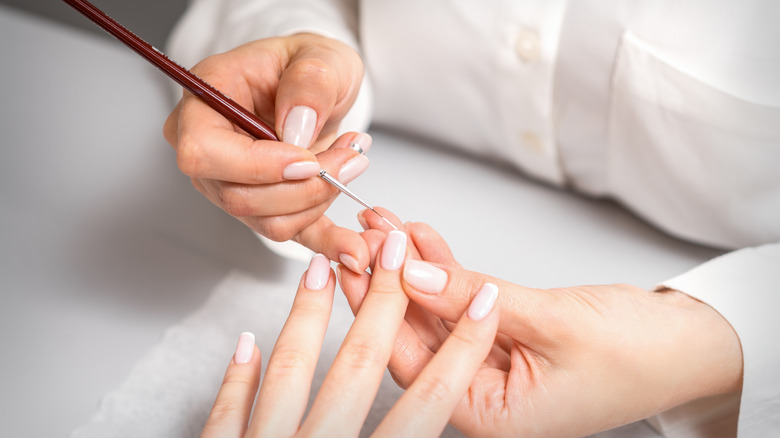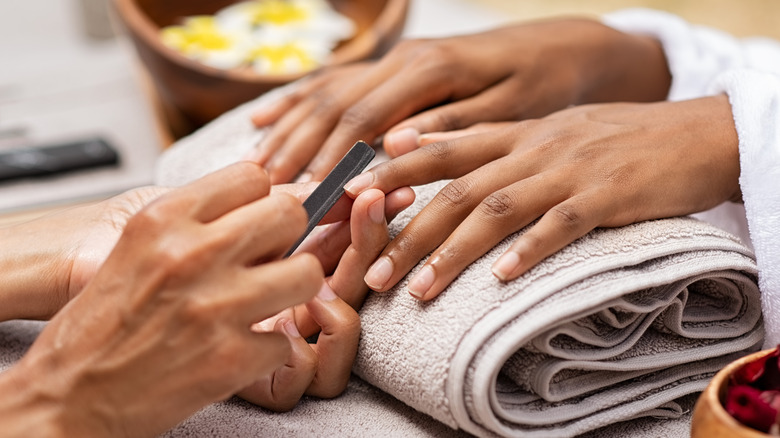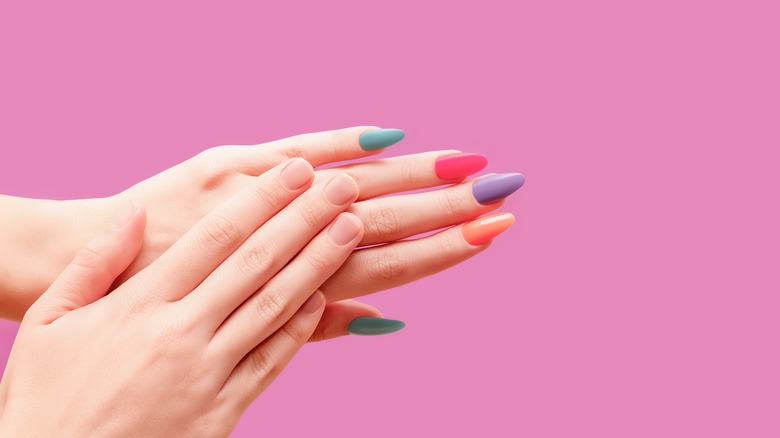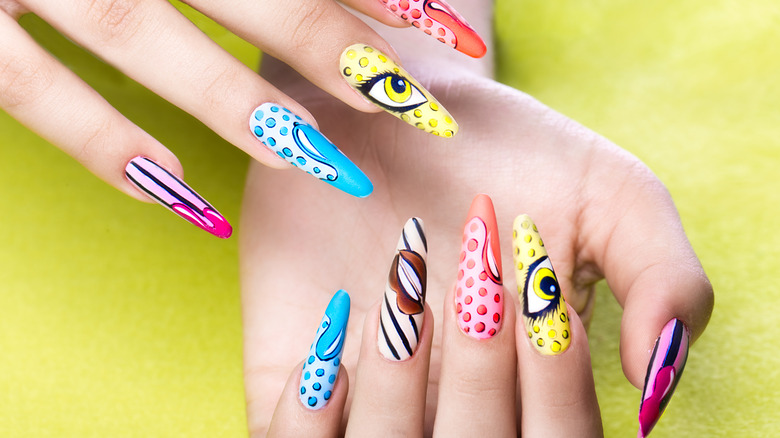What Is The Healthiest Manicure Option For Your Nails?
Getting your nails done may be one of the most prized means of self-care, but is it damaging your nails? Certain chemicals found in polishes can damage your nails, while specific colors can stain them. Some manicures may even leave your nails brittle and broken. While many people only care about whether or not their nails look good in the end, it's essential to understand the differences in manicures to ensure your nails get the best treatment possible.
What exactly is a "healthy" manicure? Well, some might think of it as one that uses only organic products on your hands. Others may lean towards a manicure that includes only a clear polish finish. It really is dependent upon how strong your nails are, to begin with, and what you are looking to achieve. While we may not give much thought to this during the time, there is no shame in asking what you're putting on your nails.
Clear is bland but may help your nails thrive
Nail designs allow people to express their creativity. Greens, reds, and golds during the Christmas season or pink hues adorned with hearts around Valentine's Day are fun ways to celebrate. However, if your natural nails are already experiencing some challenges, a basic manicure is likely the best bet. Aside from being the most cost-efficient, nails are trimmed and buffed, while polish is optional. In this instance, a clear coat is a great option.
Most nail salons have a quality clear coat on hand. However, if you're between appointments, Dr. Remedy offers a multi-purpose polish that acts as a nail base and a top coat. Their unique formula contains tea tree oil, ginseng, biotin, kale, and cactus, all of which promote healthy nail growth. Don't be afraid to take this polish to your next manicurist visit if you find it works for you.
The reason to go with clear is that regular nail polish changes can lead to conditions such as keratin granulation. If you've ever noticed white spots on your nails, it's likely your nails have developed keratin granulation. This occurs when nail polish dries on the nail bed. When this happens, it may be time to scale back on the color polish until these white spots fade away.
Is gel polish a friend or foe?
Gel manicures include all of the basics but with a special polish that is much more durable. Gel polish is applied directly to the natural nail and dried using a UV light, as opposed to a standard fan or heat dryer used on regular polish. The overall look lasts longer, but the downside is that you could ruin your nail bed during removal if not careful. Since the gel is applied to prevent peeling off, it's not the easiest to remove on your own.
Another cause for concern with gel manicures is the current link to cancer. Researchers at the University of California San Diego and the University of Pittsburgh conducted a series of tests. They determined that the continued usage of UV lamps used when drying the gel polish could affect DNA, mutating human cells, which can, in turn, increase the chances of developing skin cancers.
Now, we're not saying gel polish is a death sentence. But try finding a salon that uses LED curing light instead of a UV curing light. LEDs pump out lower levels of UV radiation than UV curing light and dry the gel polish faster, wrapping up your manicure in record time. Also, using sunscreen before placing your hand under the UV is recommended by experts, even if it's for a short time.
You may want to lay off the acrylic
Most women can agree that acrylic nails are gorgeous to look at. The acrylic is applied to artificial nails to make them more durable and longer. The biggest pro of this method is the length they give your natural nails. However, there are several cons that experts want customers to be aware of.
Bacteria growing underneath fake nails are a significant concern. Infectious disease doctor Shelly McNeil with the University of Michigan led a study that found that 73% of healthcare workers who wore artificial nails had some form of bacteria on their nails. In comparison, only 32% of those who preferred uncultivated nails had this issue. This is especially concerning for patients who may have compromised immune systems.
Another primary concern from doctors is the frequency with which artificial nails require a fill-in. Typically, this is every two to three weeks. With such an often need to apply new acrylic and undergo the buffering process, nail beds are left at risk of breaking down faster. Dermatologists recommend saving them only when necessary. A friend's wedding, a first date, your birthday, or a party are all great times to go all out on your nails.
However, suppose you simply do not feel whole without your fresh acrylic set. In that case, dermatologists suggest a few tips you can do to lessen the chances of developing harmful bacteria underneath them. For starters, skip the cuticle trimming during your manicure if you are going to do acrylics. Cuticles protect the nails and the skin from infection. You'll want to keep those around during the manicure.
Your nails, your rules. Just make sure you are aware of what options you have. Search for organic salons that cater to those wanting a less risky manicure. If there are any changes in your natural nails, such as discoloration, consult with a dermatologist immediately. Otherwise, enjoy your mani day.



